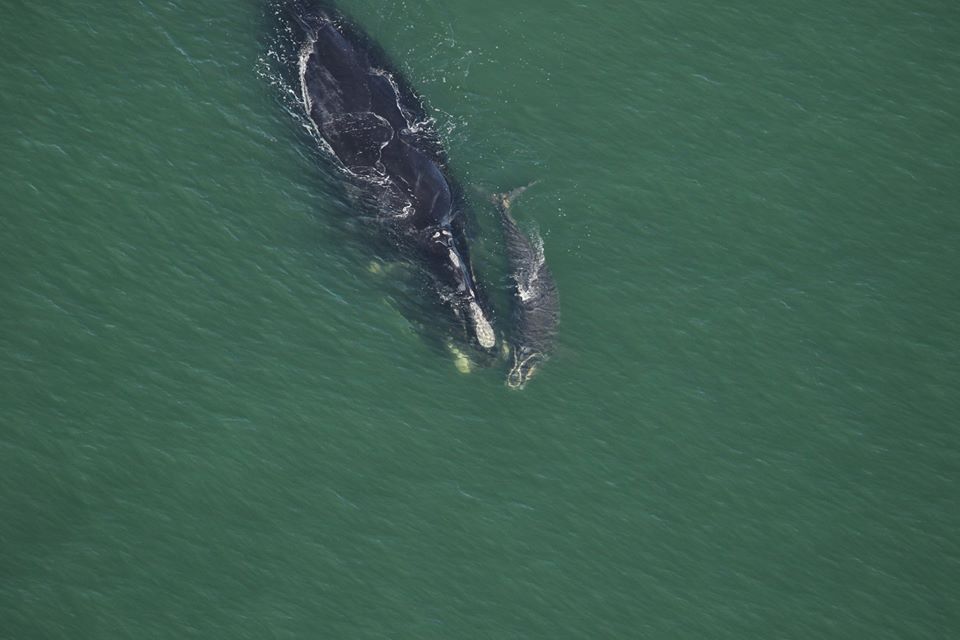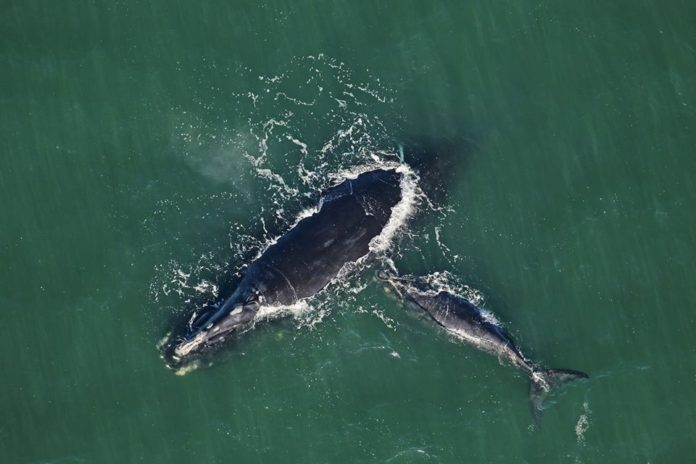Survey teams have spotted four North Atlantic right whales off of the coast of Cumberland Island Georgia on Wednesday, and two of them were newly born calves.
According to Georgia DNR and the NOAA, recent sightings of this foursome have occurred recently along the coasts of Florida and Georgia and it shows that mother-calf pairs are currently distributed throughout the calving area from the Lowcountry down to Cocoa Beach, Florida.
This is the time of the year for right whales to be moving along the coast of Beaufort and the shallow coastal waters along the southeastern U.S. After returning to warmer water and their fall/winter feeding grounds, females give birth to calves before they head back north in the spring.
This is big deal because we don’t see many calves. Only 5 calves were known to be born in 2017 and 2018 combined.

Right whales endangered
The NOAA Fisheries reports that the North Atlantic right whale is one of the world’s most endangered large whale species, with only about 400 whales remaining. Right whales are baleen whales, feeding on shrimp-like krill and small fish by straining huge volumes of ocean water through their baleen plates, which act like a sieve.
By the early 1890s, commercial whalers had hunted right whales in the Atlantic to the brink of extinction. Whaling is no longer a threat, but human interactions still present the greatest danger to this species. Entanglement in fishing gear and vessel strikes are among the leading causes of North Atlantic right whale mortality.
Biologist Barb Zoodsma with the National Oceanic and Atmospheric Administration Fisheries said boaters who see whales need to back away and leave them alone. Repeated encounters with humans are an added strain on them as they struggle to survive.
Zoodsma, who has worked on right whales with the NOAA for over 20 years, said that there were only 94 breeding female right whales as of February 2018. “You don’t have to be Einstein to figure out that’s a bad situation,” she said.
On top of a lack of births, the right whale population has experienced an unsettling number of deaths. A technical memorandum issued by NOAA in September 2018 said that 19 right whales had died in 2017 and 2018.
According to that same NOAA report, “an encounter with fishing gear is the most frequent cause of documented right whale serious injuries and deaths in recent years.” For the 19 recent whale deaths, NOAA could determine a cause of death for 10. And of those 10 fatalities, five were caused by ship strikes and five were caused by entanglement in fishing gear.
One study cited by NOAA showed that nearly 85 percent of right whales have been entangled in fishing gear. For 59 percent of right whales, it has happened twice. And the number of entanglements has been trending upward.
A dwindling population
The NOAA memorandum says right whales, like other large whales, live for a long time and can breed multiple times over a lifetime. That makes them resilient. But the memo also points out the obvious fact that if a species fails to replace its dead with new births over time, it will have a difficult time recovering a dwindling population.
So reproduction – or rather, a lack of reproduction – is a major area of concern for researchers. And for reproduction, healthy mothers are required. According to NOAA, right whales now have greater distances to travel from their feeding grounds, which have shifted farther north, down to the areas off the coasts of South Carolina Florida and Georgia where their calving grounds are.
People who spot a right whale should also call 1-877-WHALE-HELP so NOAA can alert other ships in the area.
In 2018, the first right whale calf in two years was spotted. We would love to see more of them, and pray that the species makes a comeback.











